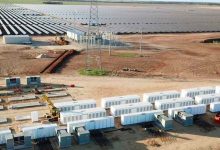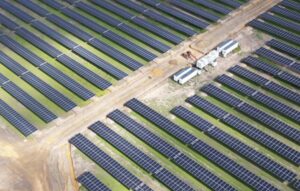Research firm Wood Mackenzie Power & Renewables expects the global energy storage market will expand 13-fold by 2024, growing from 12GWh to 158GWh by 2024.
The global energy storage market has already been increasing at a rate of knots. Figures published by Bloomberg New Energy Finance last month highlighted one driving factor of energy storage’s growth – the dramatic drop in costs for lithium-ion batteries – down 35% in 2018 to sit at $187/MWh.
“Looking back over this decade, there have been staggering improvements in the cost-competitiveness of these low-carbon options, thanks to technology innovation, economies of scale, stiff price competition and manufacturing experience,” said Elena Giannakopoulou, head of energy economics at BNEF.
It is unsurprising, then, that the global energy storage market is anticipated to surge over the next five years. Wood Mackenzie expects the gigawatt-hour pace of growth between 2019 and 2024 to rest at a compound annual growth rate (CAGR) of 38%, with annual deployment numbers expected to reach 63 GW/158 GWh in 2024.
“From 2013 to 2018, we saw fledgling market growth,” said Ravi Manghani, Wood Mackenzie Power & Renewables Research Director. “This was reflected in a global GWh compound annual growth rate (CAGR) of 74%, although we did observe relatively small deployment totals of 7 GW/12 GWh for the period.
“Nevertheless, these developments have shifted the minds of global regulators, policy makers, grid operators, asset operators and developers, in terms of how energy systems can be balanced.
“Market structures have generally struggled to keep up with the pace of this technology, illustrated by the limited number of revenue streams available to appropriately compensate storage. More than half of the GWh during this period came online in 2018 alone, beckoning an inflection in storage demand.”
Wood Mackenzie recorded a total of 3.3 GW/6 GWh of energy storage deployed in 2018, a 140% year-over-year growth.
“Half of this GW capacity was front-of-the meter (FTM), driven by accessible ancillary service revenues in key markets,” continued Manghani. “There was also a notable trend for solar-plus-storage projects providing semi-dispatchable renewable capacity.
“In terms of residential storage, state incentives, reduction in solar export tariffs and the need for backup facilitated storage deployment.
Due to rapid system cost reductions, we expect sustainable growth to continue in markets where subsidies are being curtailed. With or without a subsidy, consumers are willing to pay a premium to increase their use of rooftop solar power and, in the process, mitigate the risk of electricity bill increases.”
“The non-residential segment overtook the residential segment for the first time helped by subsidy and growth in South Korea,” added Le Xu, Wood Mackenzie Power & Renewables Senior Research Analyst. “However, it continues to be the most complicated proposition in several markets where it will take more time to de-risk, attract financing and become scalable.”
The United States and China are unsurprisingly expected to dominate the global energy storage market, accounting for 54% of the gigawatt-hours deployed by 2024, driven by market reforms, state mandates, but more importantly, what Wood Mackenzie analysts will be “the most significant energy sector transformation since the Dash for Gas.”
Front-of-the-meter deployments will remain the largest storage segment through to 2024 and Wood Mackenzie expects energy storage to move from short-duration systems providing high value power services into long-duration systems. In this way, FTM deployments will displace diesel, oil, and gas peakers, especially in fuel import countries where conventional plant run costs are higher.
“We expect renewables-plus projects to become a popular trend through 2024,” said Rory McCarthy, Wood Mackenzie Power & Renewable Senior Research Analyst.
“This is especially true for solar-plus-storage projects, as the requirement for clean and dispatchable renewables is widely accepted.
“In investment terms, we estimate the cumulative global energy storage market – defined, in this context, as total system capital expenditure on electrochemical and electromechanical energy storage systems, excluding pumped hydro – to grow six-fold to a total of $71 billion by 2024. $14 billion of that total will be invested in 2024 alone.
“The electrification epoch will unfold more rapidly over the next 5 years. With it, energy storage will become a necessary technology to enhance system flexibility and enable clean, rapid system balancing, while de-risking ever increasing intermittent assets and portfolios.”












